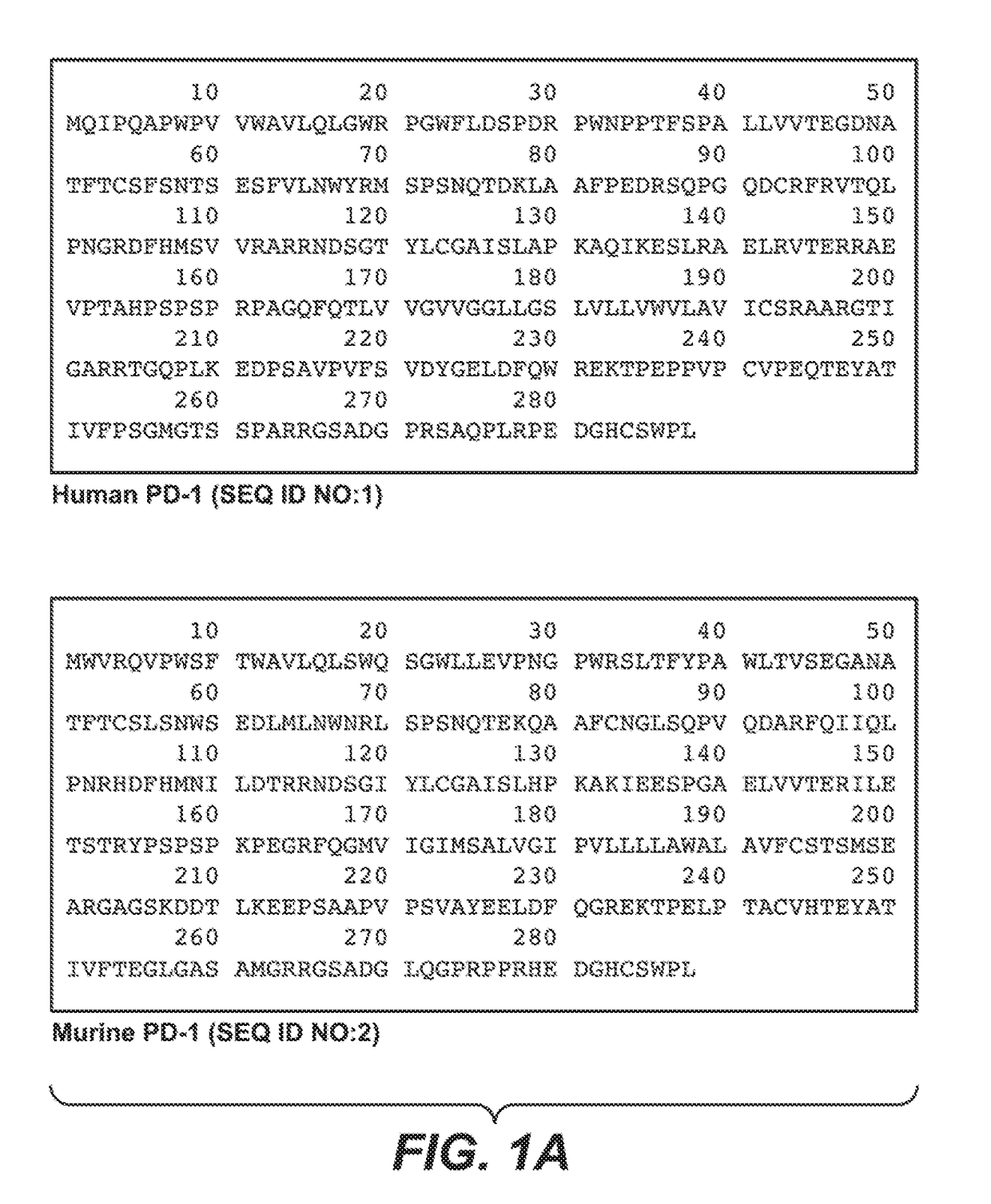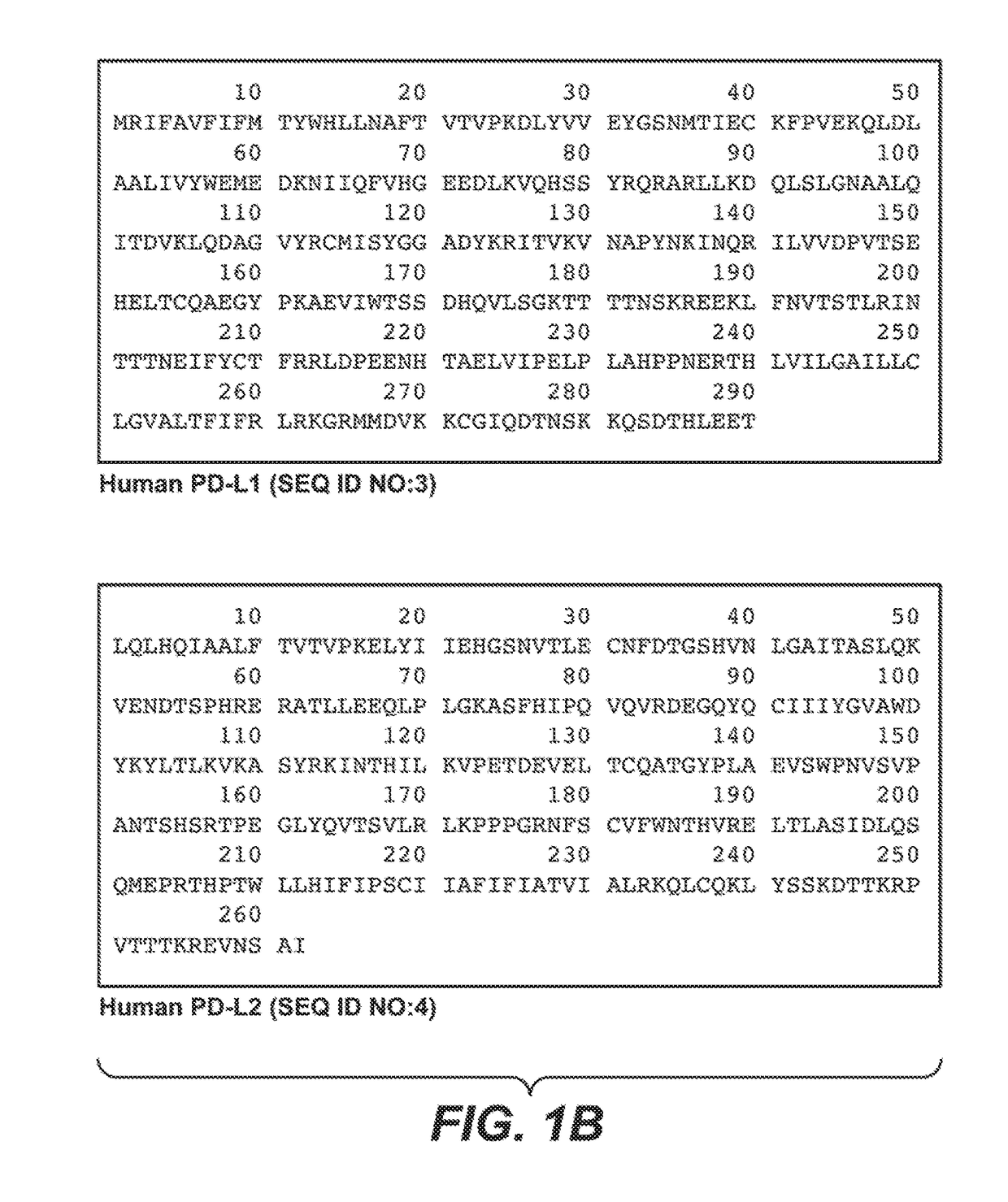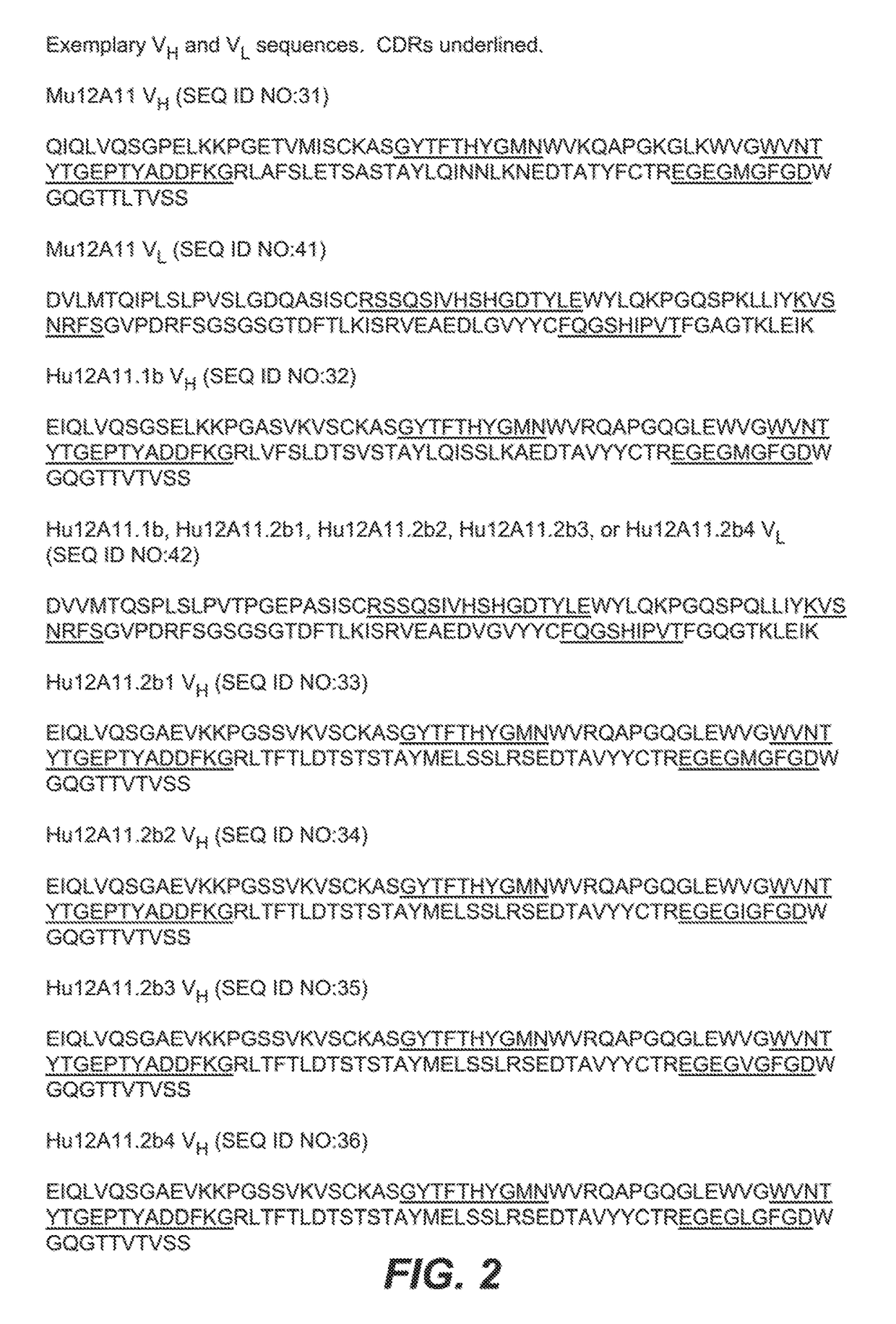Anti-PD-1 antibodies and their uses
a technology of anti-pd-1 antibodies and their use, which is applied in the field of new drugs, can solve the problems of cancer cells not being able to selectively target cancer cells over normal, healthy cells, and developing resistance to treatment by cancer
- Summary
- Abstract
- Description
- Claims
- Application Information
AI Technical Summary
Benefits of technology
Problems solved by technology
Method used
Image
Examples
example 1
and Methods
[0235]8.1.1. Antibody Binding to Plate Bound Human PD-1 by ELISA
[0236]Immunolon 4xHB 96 well plates were coated with 1 ug / ml of human PD-1 Fc fusion in at 4° C. overnight. Plates were blocked with PBS containing 1% BSA for 30 minutes at room temperature and then washed three times with PBS containing 0.1% Tween 20 (PBST) using a plate washer. PD-1-coated plates were then incubated with indicated concentrations of antibodies at room temperature (RT) for one hour. Plates were washed four times with PBST and then incubated for 1 hour at room temperature with 100 μL of goat anti-human Fab fragment specific-biotin prepared to a dilution of 1:5000 in PBS containing 1% BSA. Plates were washed five times in PBST and 100 μL of a 1:1000 dilution of Streptavidin-HRP was added to each well and incubated for 30 minutes at RT. Plates were washed five times in PBST and 100 μL of TMB One Component were added to each well and incubated at RT until color developed (approximately 5-10 minut...
example 2
n and Humanization of Mouse Anti-PD-1 Antibodies
[0251]Mice were immunized according to the methods known in the art (E. Harlow, D. Lane. Antibody: A Laboratory Manual, (Cold Spring Harbor Laboratory Press, Cold Spring Harbor, N.Y., 1998)). Isotype of each monoclonal antibody was determined using the Mouse Isotyping kit (Roche). Hybridoma clones producing antibodies of interest were purified and further characterized for affinity by surface plasmon resonance and ligand competition (ELISA).
[0252]Cloning and construction of the expression vector were accomplished by methods known in the art for expression of recombinant monoclonal antibodies.
[0253]Humanization of the antibody V region was carried out as outlined by Queen, C. et al. (Proc. Natl. Acad. Sci. USA, 1989; 86:10029-10033). The canonical structures of the CDRs were determined according to Huang et al. (Methods, 2005; 36:35-42). Human variable germline sequences with the same or most similar CDR canonical structures were identi...
example 3
of the Anti-PD-1 Antibodies
[0255]Stability of exemplary antibodies were determined by measuring PD-1 binding of the antibodies after treatment under oxidative or variable temperature conditions.
[0256]An assessment of liability motifs identified a conserved methionine residue at Kabat position 99 (M99) that was believed to be both solvent exposed and prone to deamidation. Samples of the M99 parent antibody Hu12A11.2b1 were exposed to accelerated degradation conditions to enhance potential deamidation (FIG. 3A). The samples treated with 1% hydrogen peroxide (1% HP) or 1% tert-butyl hydroperoxide (1% TBHP) demonstrated loss of binding affinity, suggesting the potential for oxidation of the methionine-99 residue. A set of antibodies containing point mutations at position M99 were constructed, including isoleucine (M99I, Hu12A11.2b2 having a VH according to SEQ ID NO:34), valine (M99V, Hu12A11.2b3 having a VH according to SEQ ID NO:35), and leucine (M99L, Hu12A11.2b4 having a VH accordin...
PUM
| Property | Measurement | Unit |
|---|---|---|
| Molar density | aaaaa | aaaaa |
| Molar density | aaaaa | aaaaa |
| Molar density | aaaaa | aaaaa |
Abstract
Description
Claims
Application Information
 Login to View More
Login to View More - R&D
- Intellectual Property
- Life Sciences
- Materials
- Tech Scout
- Unparalleled Data Quality
- Higher Quality Content
- 60% Fewer Hallucinations
Browse by: Latest US Patents, China's latest patents, Technical Efficacy Thesaurus, Application Domain, Technology Topic, Popular Technical Reports.
© 2025 PatSnap. All rights reserved.Legal|Privacy policy|Modern Slavery Act Transparency Statement|Sitemap|About US| Contact US: help@patsnap.com



